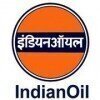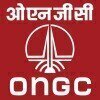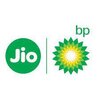Filter interviews by
Bharat Petroleum Interview Questions and Answers for Freshers
45 Interview questions
Boyle's Law relates pressure and volume of gas, while Charles's Law relates volume and temperature.
Boyle's Law: P1V1 = P2V2 (Pressure inversely proportional to volume at constant temperature). Example: Syringe action.
Charles's Law: V1/T1 = V2/T2 (Volume directly proportional to temperature at constant pressure). Example: Balloon expanding in heat.
Both laws are fundamental in understanding gas behavior in physics a...
The Joule-Thomson effect describes the temperature change of a gas when it expands or is compressed without heat exchange.
Occurs when a gas expands or is compressed at constant enthalpy.
For most gases, expansion leads to cooling (negative Joule-Thomson coefficient).
Example: Cooling of gases in refrigeration systems.
Some gases, like helium, can heat up upon expansion (positive Joule-Thomson coefficient).
Used in liq...
P&ID for a heat exchanger includes symbols for valves, pumps, and flow direction for process control.
Heat Exchanger: Symbolized by two parallel lines with a heat transfer symbol.
Non-Return Valve (NRV): Represented by a triangle pointing in the flow direction.
Control Valve: Shown as a circle with a diagonal line, indicating flow regulation.
Globe Valve: Depicted as a circle with a 'V' shape inside, used for thro...
The operating pressure of VGO-HDT in BPCL is crucial for optimizing hydrocracking processes.
VGO-HDT stands for Vacuum Gas Oil Hydrocracking Unit.
Typical operating pressures range from 50 to 200 bar.
Higher pressures can enhance the conversion of heavy oils.
BPCL may adjust pressures based on feedstock and desired product specifications.
Crude Distillation Unit separates crude oil into various fractions based on boiling points through heating and condensation.
Heating: Crude oil is heated in a furnace to around 350-400°C.
Distillation Column: The heated oil enters a distillation column where it rises and cools.
Fractionation: Different components separate based on boiling points; lighter fractions rise to the top.
Collection: Fractions like gasoline, ...
P&ID (Piping and Instrumentation Diagram) details system components, while PFD (Process Flow Diagram) provides a high-level overview.
P&ID includes detailed information about piping, valves, and instrumentation.
PFD focuses on the overall process flow and major equipment.
Example: P&ID shows control loops and safety systems; PFD shows the sequence of operations.
P&ID is used for construction and mainte...
Heat transfer occurs via conduction, convection, and radiation, each governed by specific laws.
Conduction: Transfer of heat through a solid material. Example: A metal spoon getting hot in a pot of boiling water.
Convection: Transfer of heat through fluids (liquids or gases) due to movement. Example: Warm air rising in a room.
Radiation: Transfer of heat through electromagnetic waves. Example: Feeling warmth from the...
To cancel a cash memo, follow the established procedures for returns or cancellations in your organization.
Verify the cash memo details: Ensure you have the correct memo number and associated transaction.
Check company policy: Review the guidelines for cancellations to ensure compliance.
Initiate the cancellation process: This may involve filling out a cancellation form or notifying a supervisor.
Document the reason ...
To cancel a delivery, follow the company's cancellation policy and communicate promptly with the relevant parties involved.
Check Cancellation Policy: Review the company's terms regarding delivery cancellations to understand the timeframe and conditions.
Contact Customer Service: Reach out to the customer service team via phone or email to request the cancellation.
Provide Order Details: Have your order number and re...
Booking gas from the system involves accessing the application, entering details, and confirming the order for delivery.
Access the Gas Booking System: Log in to the application using your credentials.
Select Service Type: Choose the type of gas service you need, such as domestic or commercial.
Enter Customer Details: Fill in the required information, including name, address, and contact number.
Specify Quantity: Indi...
Bharat Petroleum Interview Experiences for Freshers
39 interviews found
I appeared for an interview in Mar 2025, where I was asked the following questions.
- Q1. How to do gas delivery from the system and how to cancel delivery and how to do booking, how to cancel booking and how to do delivery confirmation, how to enter delivery and how to cancel delivery in cash ...
- Ans.
Gas delivery involves booking, confirming, and managing deliveries, including cancellations and payment methods.
To book a gas delivery, access the system and select 'Book Delivery', then enter customer details and delivery address.
To cancel a delivery, navigate to 'Manage Deliveries', find the scheduled delivery, and select 'Cancel'.
Delivery confirmation can be done by accessing 'Delivery Status' and marking the delive...
- Q2. Which area he has to go to for cutting which place and by selecting which thing he can send the delivery man to which area and how to receive the complaint and how to close the complaint
- Q3. How to cancel a delivery
- Ans.
To cancel a delivery, follow the company's cancellation policy and communicate promptly with the relevant parties involved.
Check Cancellation Policy: Review the company's terms regarding delivery cancellations to understand the timeframe and conditions.
Contact Customer Service: Reach out to the customer service team via phone or email to request the cancellation.
Provide Order Details: Have your order number and relevan...
- Q4. How to cancel a cash memo
- Ans.
To cancel a cash memo, follow the established procedures for returns or cancellations in your organization.
Verify the cash memo details: Ensure you have the correct memo number and associated transaction.
Check company policy: Review the guidelines for cancellations to ensure compliance.
Initiate the cancellation process: This may involve filling out a cancellation form or notifying a supervisor.
Document the reason for c...
- Q5. How to book gas from the system
- Ans.
Booking gas from the system involves accessing the application, entering details, and confirming the order for delivery.
Access the Gas Booking System: Log in to the application using your credentials.
Select Service Type: Choose the type of gas service you need, such as domestic or commercial.
Enter Customer Details: Fill in the required information, including name, address, and contact number.
Specify Quantity: Indicate ...
Interview Preparation Tips
I applied via Campus Placement and was interviewed in Jul 2024. There were 2 interview rounds.
(3 Questions)
- Q1. Tell me about yourself
- Ans.
I am a dedicated Mechanical Engineer with a passion for problem-solving and innovation.
Graduated with a degree in Mechanical Engineering from XYZ University
Experienced in designing and testing mechanical systems
Proficient in CAD software such as SolidWorks and AutoCAD
Strong analytical skills and attention to detail
Worked on projects like designing a new cooling system for a car engine
- Q2. Favorite subject
- Ans.
My favorite subject is Thermodynamics because I enjoy studying the transfer of energy and heat.
I find the laws of thermodynamics fascinating
I enjoy analyzing heat transfer processes
I like studying the relationship between energy and work
- Q3. Scavenging, spoliers, gas cycles, etc.
(2 Questions)
- Q1. Biggest achievement
- Ans.
Designed and implemented a new cooling system for a high-performance engine, increasing efficiency by 15%.
Led a team of engineers to analyze current cooling system performance
Designed a new cooling system using advanced simulation software
Implemented the new system on a prototype engine and conducted performance tests
Achieved a 15% increase in efficiency compared to the previous system
- Q2. Have you any time involved in decision making, can be during any task
- Ans.
Yes, I have been involved in decision making during various tasks.
I have made decisions regarding design changes in projects to improve efficiency.
I have been part of a team that had to decide on the best approach to solve a technical problem.
I have made decisions on prioritizing tasks to meet project deadlines.
I have been involved in selecting the most suitable materials for a project based on cost and performance req...
Interview Preparation Tips
I applied via Job Portal
(3 Questions)
- Q1. Diploma in chemical engineering related questions ask to me in technical language
- Q2. What is your favourite subject in diploma
- Q3. Explain in any one subject
(2 Questions)
- Q1. What is your personal details
- Ans.
I am a dedicated chemistry graduate with a passion for lab work and a strong interest in energy solutions.
Graduated with a degree in Chemistry from XYZ University, where I focused on organic chemistry.
Completed an internship at ABC Labs, where I conducted experiments on fuel efficiency.
Participated in a research project on renewable energy sources, presenting findings at a national conference.
Skilled in using various l...
- Q2. I explain my personal details I am ayush Kumar Sharma And I am from mirzapur UP I have done diploma in chemical engineering government polytechnic barabanki
I appeared for an interview in Mar 2024.
(3 Questions)
- Q1. Subject of interest
- Ans.
The subject of interest is the importance of safety measures in a LPG bottling plant.
Safety measures are crucial in a LPG bottling plant to prevent accidents and ensure the well-being of workers.
Examples of safety measures include regular equipment maintenance, proper training for employees, and strict adherence to safety protocols.
Implementing safety measures can also help in preventing environmental hazards and ensur...
- Q2. Project details
- Q3. Skills and training
- Ans.
PLC , SCADA and power generation to distribution
(2 Questions)
- Q1. Basic subjective knowledge
- Q2. Project full details in future and key skills
I appeared for an interview in Apr 2024.
(2 Questions)
- Q1. General questions like family and other ,
- Q2. Principle of testings
- Ans.
Principle of testing involves following standardized procedures to ensure accurate and reliable results.
Testing should be based on established protocols and standards
Proper controls should be in place to ensure accuracy
Results should be reproducible and consistent
Quality assurance measures should be implemented to maintain reliability
Examples: following ASTM standards for material testing, using control samples in medi...
(1 Question)
- Q1. What is the scope of Nabl
- Ans.
NABL stands for National Accreditation Board for Testing and Calibration Laboratories.
NABL is an autonomous body under the Department of Science and Technology, Government of India.
It provides accreditation to testing and calibration laboratories in various fields such as chemical, biological, mechanical, and electrical.
Accreditation by NABL signifies that the laboratory meets international standards and is competent t...
Skills evaluated in this interview
I appeared for an interview before Jun 2024, where I was asked the following questions.
- Q1. What are the different types of heat transfer, and what are the laws associated with each type?
- Ans.
Heat transfer occurs via conduction, convection, and radiation, each governed by specific laws.
Conduction: Transfer of heat through a solid material. Example: A metal spoon getting hot in a pot of boiling water.
Convection: Transfer of heat through fluids (liquids or gases) due to movement. Example: Warm air rising in a room.
Radiation: Transfer of heat through electromagnetic waves. Example: Feeling warmth from the sun ...
- Q2. What is the process involved in a Crude Distillation Unit?
- Ans.
Crude Distillation Unit separates crude oil into various fractions based on boiling points through heating and condensation.
Heating: Crude oil is heated in a furnace to around 350-400°C.
Distillation Column: The heated oil enters a distillation column where it rises and cools.
Fractionation: Different components separate based on boiling points; lighter fractions rise to the top.
Collection: Fractions like gasoline, keros...
- Q3. What the operating pressure of VGO-HDT in BPCL?
- Ans.
The operating pressure of VGO-HDT in BPCL is crucial for optimizing hydrocracking processes.
VGO-HDT stands for Vacuum Gas Oil Hydrocracking Unit.
Typical operating pressures range from 50 to 200 bar.
Higher pressures can enhance the conversion of heavy oils.
BPCL may adjust pressures based on feedstock and desired product specifications.
- Q4. What's the difference between P&ID and PFD?
- Ans.
P&ID (Piping and Instrumentation Diagram) details system components, while PFD (Process Flow Diagram) provides a high-level overview.
P&ID includes detailed information about piping, valves, and instrumentation.
PFD focuses on the overall process flow and major equipment.
Example: P&ID shows control loops and safety systems; PFD shows the sequence of operations.
P&ID is used for construction and maintenance...
- Q5. Draw the P&ID of heat exchanger, NRV, Control valve, globe valve, pump etc.
- Ans.
P&ID for a heat exchanger includes symbols for valves, pumps, and flow direction for process control.
Heat Exchanger: Symbolized by two parallel lines with a heat transfer symbol.
Non-Return Valve (NRV): Represented by a triangle pointing in the flow direction.
Control Valve: Shown as a circle with a diagonal line, indicating flow regulation.
Globe Valve: Depicted as a circle with a 'V' shape inside, used for throttlin...
- Q6. What was your B.Tech project, and can you explain it briefly?
- Ans.
My B.Tech project focused on developing a smart irrigation system using IoT technology to optimize water usage in agriculture.
Utilized sensors to monitor soil moisture levels.
Implemented a microcontroller to automate irrigation based on real-time data.
Developed a mobile app for farmers to control and monitor the system remotely.
Conducted field tests to evaluate water savings and crop yield improvements.
- Q7. What is Joule thomson effect?
- Ans.
The Joule-Thomson effect describes the temperature change of a gas when it expands or is compressed without heat exchange.
Occurs when a gas expands or is compressed at constant enthalpy.
For most gases, expansion leads to cooling (negative Joule-Thomson coefficient).
Example: Cooling of gases in refrigeration systems.
Some gases, like helium, can heat up upon expansion (positive Joule-Thomson coefficient).
Used in liquefac...
- Q8. What are Boyle's Law and Charles's Law?
- Ans.
Boyle's Law relates pressure and volume of gas, while Charles's Law relates volume and temperature.
Boyle's Law: P1V1 = P2V2 (Pressure inversely proportional to volume at constant temperature). Example: Syringe action.
Charles's Law: V1/T1 = V2/T2 (Volume directly proportional to temperature at constant pressure). Example: Balloon expanding in heat.
Both laws are fundamental in understanding gas behavior in physics and ch...
Apprenticeship Training Mechanical Engineer Interview Questions & Answers
posted on 27 Jul 2024
(2 Questions)
- Q1. How to anti break system work.
- Ans.
Anti-lock braking system (ABS) prevents wheels from locking up during braking, allowing driver to maintain steering control.
ABS uses sensors to monitor wheel speed
If a wheel is about to lock up, ABS modulates brake pressure to that wheel
This prevents skidding and allows driver to steer while braking
ABS is especially useful in slippery conditions like rain or snow
- Q2. Type of breaks.
- Ans.
Different types of brakes used in mechanical engineering.
Mechanical brakes: rely on friction to slow or stop motion, such as disc brakes or drum brakes.
Hydraulic brakes: use fluid pressure to apply force, commonly found in vehicles like cars and motorcycles.
Electromagnetic brakes: use electromagnetic force to slow or stop motion, often used in industrial machinery.
Regenerative brakes: convert kinetic energy into anothe...
Interview Preparation Tips
(2 Questions)
- Q1. Basic of your branch questions
- Q2. Project discussion
I applied via Approached by Company and was interviewed in Oct 2023. There was 1 interview round.
(2 Questions)
- Q1. What is total reflux and partial reflux
- Ans.
Total reflux and partial reflux are terms used in distillation processes to describe the flow of liquid and vapor within a column.
Total reflux occurs when all the condensed liquid is returned to the column as reflux, with no product being withdrawn.
Partial reflux involves withdrawing some of the liquid product while returning the rest as reflux to the column.
Total reflux is often used at the beginning of a distillation...
- Q2. Some of the distillate is sent back to the column - partial all the distillate is sed back to the column -total
Interview Preparation Tips
I applied via Campus Placement and was interviewed before Oct 2022. There were 3 interview rounds.

(6 Questions)
- Q1. Mostly technical questions of heat transfer
- Q2. Heat Transfer questions
- Q3. Mass Transfer questions
- Q4. Fluid Mechanics Questions
- Q5. Chemical Reaction Engineering questions
- Q6. Distillation tower questions
(3 Questions)
- Q1. Questions on CV
- Q2. Questions on resume
- Q3. Questions based on situations
Interview Preparation Tips
Be serious yet a little candid
Think with a calm mind
Top trending discussions






Bharat Petroleum Interview FAQs
Some of the top questions asked at the Bharat Petroleum interview for freshers -
The duration of Bharat Petroleum interview process can vary, but typically it takes about less than 2 weeks to complete.
Tell us how to improve this page.
Bharat Petroleum Interviews By Designations
- Bharat Petroleum Management Trainee Interview Questions
- Bharat Petroleum Apprentice Trainee Interview Questions
- Bharat Petroleum Apprenticeship Trainee Interview Questions
- Bharat Petroleum Graduate Apprentice Trainee Interview Questions
- Bharat Petroleum Graduate Apprentice Interview Questions
- Bharat Petroleum Apprentice Interview Questions
- Bharat Petroleum Graduate Engineer Interview Questions
- Bharat Petroleum Graduate Apprenticeship Trainee Interview Questions
- Show more
Interview Questions for Popular Designations
- Management Trainee Interview Questions
- Apprentice Trainee Interview Questions
- Apprenticeship Trainee Interview Questions
- Graduate Apprentice Trainee Interview Questions
- Apprentice Interview Questions
- Graduate Apprentice Interview Questions
- Senior Associate Interview Questions
- Business Analyst Interview Questions
- Show more
Overall Interview Experience Rating
based on 18 interview experiences
Difficulty level
Duration
Interview Questions from Similar Companies
Bharat Petroleum Reviews and Ratings
based on 1.8k reviews
Rating in categories
|
Assistant Manager
236
salaries
| ₹19.2 L/yr - ₹32.8 L/yr |
|
Graduate Apprentice Trainee
204
salaries
| ₹2 L/yr - ₹5 L/yr |
|
Manager
202
salaries
| ₹19.3 L/yr - ₹35 L/yr |
|
Graduate Apprenticeship Trainee
138
salaries
| ₹1.5 L/yr - ₹5 L/yr |
|
Management Trainee
114
salaries
| ₹16 L/yr - ₹22 L/yr |

Reliance Industries

Indian Oil Corporation

Shell

Hindustan Petroleum
- Home >
- Interviews >
- Bharat Petroleum Interview Questions >
- Bharat Petroleum Interview Questions for Fresher













